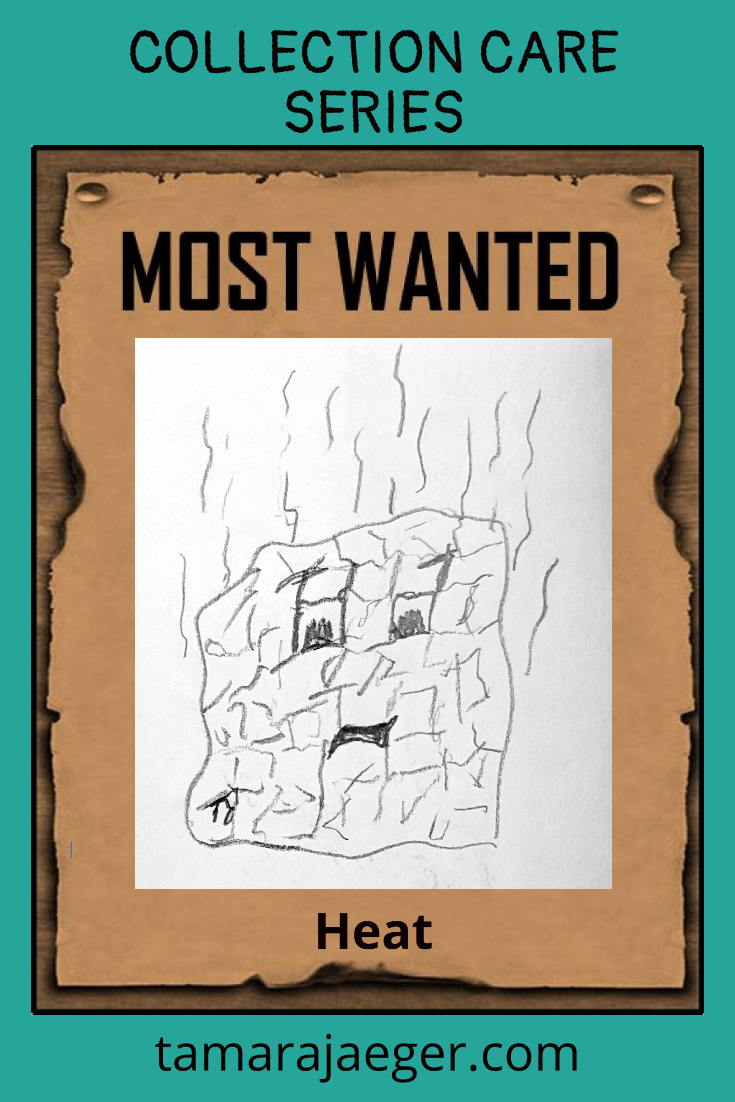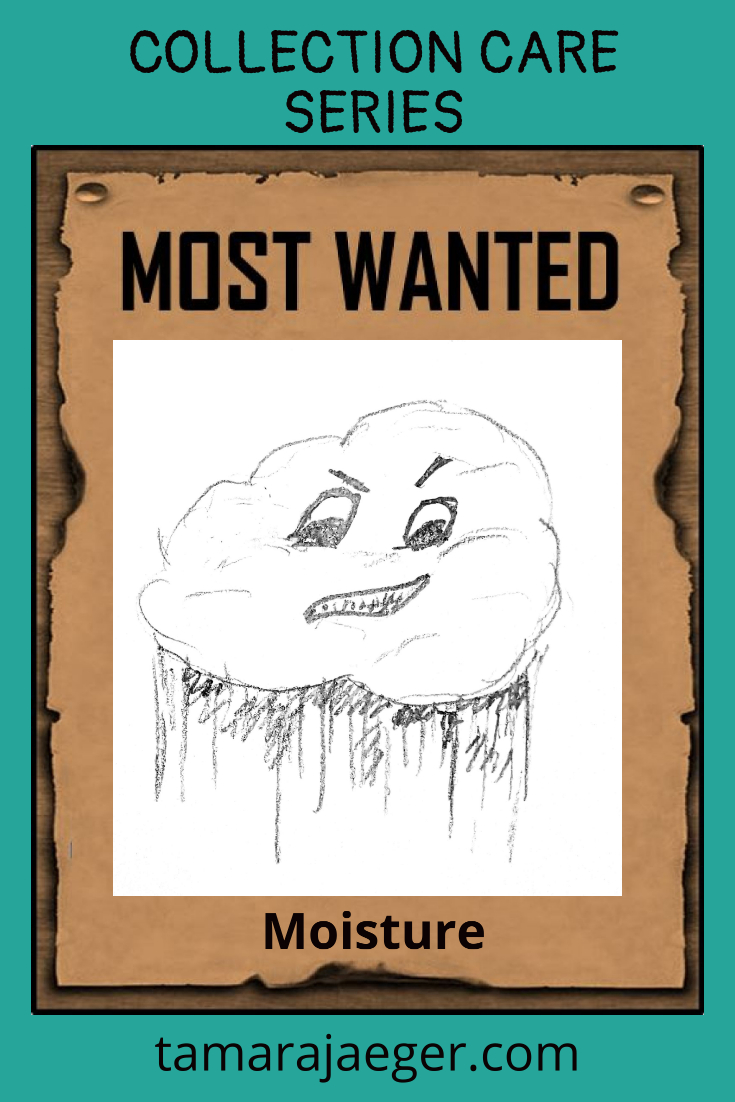Posts Tagged: musical instruments


Collection Care Series: Enemy #6: The Gang
This week, we’ll be talking about our next enemy, which is really a collection of enemies. I call it: The Gang.
There’s nobody really new here. I just wanted to emphasize that you can get multiple enemies working together, and this type of situation will destroy your treasures even more quickly!
Some dangerous combinations you frequently find are light and heat, humidity/moisture and heat, moisture and insects, and moisture and mold. Or if you’re really unlucky, you can even get moisture, heat, insects, And mold all together! That’s…not a situation you want to find yourself in.

In general terms, for the types of vulnerable materials we’ve been talking about over the last few weeks—like paintings, papers, photos and negatives, wooden items, musical instruments, plastics—you want to avoid bright, direct light, such as sunlight or fluorescent lights. Keep the humidity and temperature moderate—if it’s uncomfortable for you, it’s probably uncomfortable for your treasures.

Avoid really warm areas like attics and garages. Cold is generally okay, but you want to avoid rapid fluctuations in temperature, which can cause rapid humidity fluctuations. Keeping the temperature and humidity stable is also generally more important than maintaining a specific number. Of course, you don’t want the humidity to go over about 70% since that leaves your items susceptible to mold and insect infestations.
For storage, you want to use acid-free, archival materials. Food-grade plastic storage boxes and food storage bags are good choices. Avoid cardboard and newspaper! Don’t store your treasures in areas that aren’t climate controlled—like attics and garages, or in basements where they can get flooded. If you do need to store things in a basement, use plastic storage boxes and try to raise them at least a few inches off the floor.
If you’ve missed any of the previous posts, you can go back and check them out here.
What storage and display concerns have you identified over the last few weeks? Tell me in the comments.
Missed the previous posts? Start at the beginning of the collection care series here.
Want to stay up to date and see more of what I’m working on? Sign up for my mailing list here and get a FREE collection care resource guide. (I promise not to be spammy with my emails—I hate that too!)


Collection Care Series: Enemy #3: Heat
This week, we’ll be talking about our next enemy: Heat.
There are two issues with heat as far as your collections go. First, we have a bit of a chemistry-based issue. Higher temperatures increase chemical reaction rates and many deterioration processes are due to chemical reactions. So storing your item somewhere hot will cause it to deteriorate faster, even in the absence of other risk factors, such as light, which we talked about here. Secondly, higher temperatures usually result in lower relative humidity levels. If you missed it, we discussed problems related to humidity here.

Some items that can be damaged by heat include plastics, photos and negatives, paintings, and musical instruments. For these materials, avoid rapid changes in temperature, which can cause rapid humidity fluctuations. Plastics and photographic negatives are particularly susceptible to chemical degradation, which is accelerated at high temperatures. Avoid storing them in areas that can get very warm, such as attics or garages. You also want to keep in mind that when very cold, plastics get brittle and are vulnerable to damage from dropping or crushing. Again, don’t store them in places like attics and garages, since these areas tend to experience extremes and rapid changes in temperature and humidity levels.
Where do you store your vulnerable treasures? Tell me in the comments.
Check out the next post in the collection care series here.
Missed the previous posts? Start at the beginning of the collection care series here.
Want to stay up to date and see more of what I’m working on? Sign up for my mailing list here and get a FREE collection care resource guide. (I promise not to be spammy with my emails—I hate that too!)



